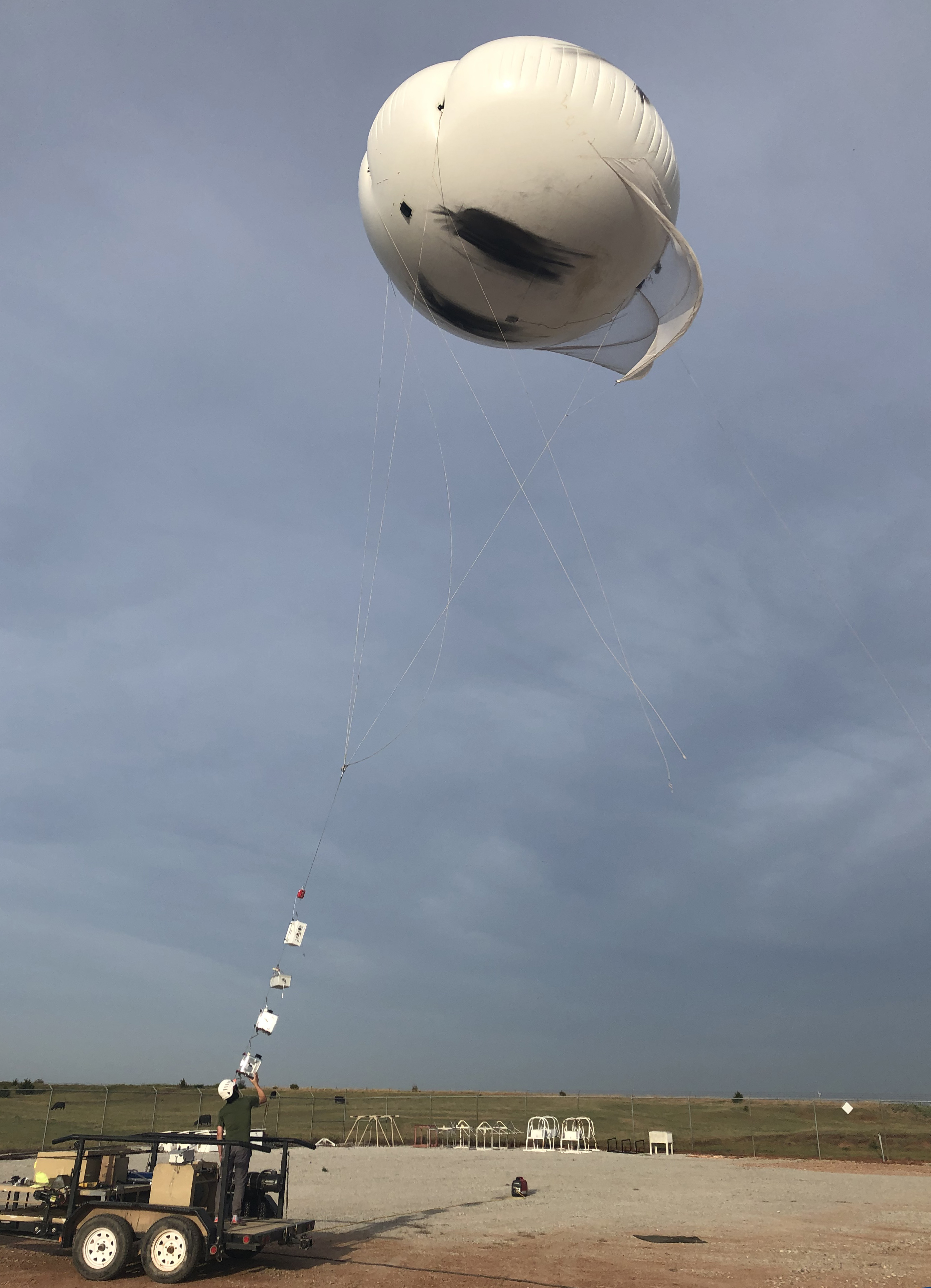ARM Plans Tethered Balloon Flights for TRACER Campaign in 2021
Published: 17 August 2020
Submit your guest instrument proposals now

The Atmospheric Radiation Measurement (ARM) user facility seeks proposals for guest instruments to fly on its tethered balloon systems (TBS) during the TRacking Aerosol Convection interactions ExpeRiment (TRACER). The flights will take place during the TRACER intensive operational period (IOP) scheduled from June to September 2021 in the Houston, Texas, area.
Flights in support of TRACER will be in clear air only. The maximum altitude for flights is under review, but it is currently expected to be 1.5 kilometers (4,921 feet) above ground level at the ancillary site near Guy, Texas, and at Smith Point, Texas. Small TBS flights below 500 feet may be possible at other locations in the Houston area. ARM expects to have the capacity to conduct up to four missions during the TRACER IOP.
Flight Status at Other ARM Sites
ARM anticipates supporting additional TBS guest instrument flights at the Southern Great Plains (SGP) atmospheric observatory in 2021, but those proposals are not being accepted at this time. The timing of new 2021 SGP flights will depend on the impact of the COVID-19 pandemic on 2020 TBS activities. Some 2020 flights are postponed. ARM intends to reschedule as many missions as possible that have been affected by COVID-19, and this is resulting in some uncertainty regarding capacity for additional flights at the SGP in 2021.
In addition, there is interest in flights supporting the Surface Atmosphere Integrated Field Laboratory (SAIL) field campaign, an ARM Mobile Facility deployment starting in September 2021 near Crested Butte, Colorado. ARM will explore its ability to support TBS flights for SAIL over the next few months.
ARM expects to post another TBS proposal call later this year once it has a better understanding of the 2021 SGP flight schedule and its ability to support flights during SAIL.
Guest Proposals Welcome for TRACER
ARM will consider proposals to fly guest instruments during the TRACER TBS missions outlined above. Instruments that have not yet flown on the ARM TBS will be considered in addition to instruments that flew on previous missions.
Factors that will be considered in proposal reviews include:
- relevance to the ARM mission
- whether the instrument has previously flown on a tethered balloon
- the instrument’s weight
- the expected effort required by ARM staff for integration of the instrument onto the tethered balloon.
ARM will provide integration support for approved campaigns; however, ARM will not provide funding to principal investigators. Proposals will be reviewed together during the quarterly field campaign review held in October 2020 by the ARM Infrastructure Management Board. To be eligible for this review, proposals must be received by September 1, 2020.
Details of potential guest instruments will need to be worked out with ARM operations, but here are a few preliminary guidelines:
- Guest instruments must be battery-powered and should not exceed 61 centimeters (24 inches) in any dimension.
- Depending on weather conditions, mission requirements, and the TBS platform in operation, a total payload weight capacity of up to 32 kilograms (70 pounds) is available on the TBS. Any instrument should not exceed 16 kilograms (35 pounds).
- Core ARM TBS instrumentation will consume a minimum of 7.75 kilograms (17.1 pounds) of payload weight capacity. Core ARM instrumentation may include printed optical particle spectrometers, condensation particle counters, particle impactors, anemometers, distributed temperature sensing, and radiosondes. Proposals should indicate which ARM core instruments are critical or useful in combination with proposed guest instruments.
Sandia National Laboratories manages ARM TBS operations, Argonne National Laboratory manages the Southern Great Plains observatory, and Los Alamos National Laboratory manages the ARM Mobile Facilities that will be deployed for TRACER and SAIL.
Keep up with the Atmospheric Observer
Updates on ARM news, events, and opportunities delivered to your inbox
ARM User Profile
ARM welcomes users from all institutions and nations. A free ARM user account is needed to access ARM data.


















